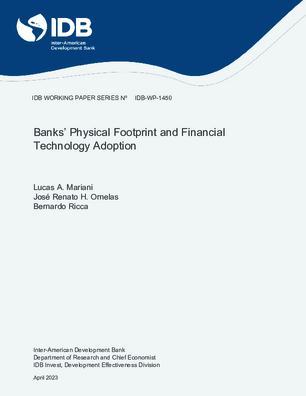Banks’ Physical Footprint and Financial Technology Adoption
Date
Apr 2023
We investigate how the presence of physical bank branches moderates financial technology diffusion. Our identification strategy uses services suspensions caused by criminal groups that perform hit-and-run raids exploding branch facilities and rendering them inoperable for months. We show that the shock depletes the cash inventory of branches, but the stock of credit and deposits remain unaffected. We then document that customers increase their usage of noncash payments after the events. We investigate a new instant payment technology called Pix that was a remarkable success in terms of adoption. After robbery events, the number and value of Pix intra-municipality transactions increase, as well as the number of users. We also find Pix usage spillover effects that go beyond cash substitution. First, the number of Pix transactions and users also increases when either the payer or the payee is in an unaffected municipality. Second, we show that there are local spillovers to digital institutions, indicating that cash dependence can be an impediment to their expansion. Our results shed light on the determinants of technology adoption and the consequences of the recent transition in the banking industry from a physical branch-based model to an increasing reliance on digital services.




